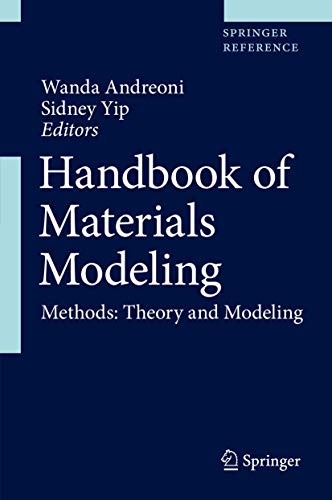

Most ebook files are in PDF format, so you can easily read them using various software such as Foxit Reader or directly on the Google Chrome browser.
Some ebook files are released by publishers in other formats such as .awz, .mobi, .epub, .fb2, etc. You may need to install specific software to read these formats on mobile/PC, such as Calibre.
Please read the tutorial at this link: https://ebookbell.com/faq
We offer FREE conversion to the popular formats you request; however, this may take some time. Therefore, right after payment, please email us, and we will try to provide the service as quickly as possible.
For some exceptional file formats or broken links (if any), please refrain from opening any disputes. Instead, email us first, and we will try to assist within a maximum of 6 hours.
EbookBell Team

5.0
68 reviewsThe first reference of its kind in the rapidly emerging field of computational approachs to materials research, this is a compendium of perspective-providing and topical articles written to inform students and non-specialists of the current status and capabilities of modelling and simulation. From the standpoint of methodology, the development follows a multiscale approach with emphasis on electronic-structure, atomistic, and mesoscale methods, as well as mathematical analysis and rate processes. Basic models are treated across traditional disciplines, not only in the discussion of methods but also in chapters on crystal defects, microstructure, fluids, polymers and soft matter. Written by authors who are actively participating in the current development, this collection of 150 articles has the breadth and depth to be a major contributor toward defining the field of computational materials. In addition, there are 40 commentaries by highly respected researchers, presenting various views that should interest the future generations of the community.
Subject Editors: Martin Bazant, MIT ; Bruce Boghosian, Tufts University; Richard Catlow, Royal Institution; Long-Qing Chen, Pennsylvania State University; William Curtin, Brown University; Tomas Diaz de la Rubia, Lawrence Livermore National Laboratory; Nicolas Hadjiconstantinou, MIT; Mark F. Horstemeyer, Mississippi State University; Efthimios Kaxiras, Harvard University; L. Mahadevan, Harvard University; Dimitrios Maroudas, University of Massachusetts; Nicola Marzari, MIT; Horia Metiu, University of California Santa Barbara; Gregory C. Rutledge, MIT; David J. Srolovitz, Princeton University; Bernhardt L. Trout, MIT; Dieter Wolf, Argonne National Laboratory.
**